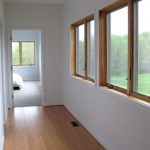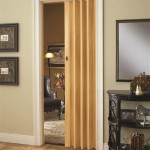Essential Aspects of Japanese Style Interior
Japanese style interior design emphasizes simplicity, natural materials, and a seamless connection between indoor and outdoor spaces. By incorporating these fundamental elements into your home, you can create a serene and harmonious living environment.
Natural Materials
Natural materials, such as wood, stone, bamboo, and paper, are widely used in Japanese style interiors. The organic textures and warm tones of these materials create a sense of tranquility and connection to nature. Wooden floors, sliding shoji screens, and tatami mats are common features.
Simplicity and Minimalism
Japanese style interiors embrace simplicity and minimalism. Cluttered spaces are avoided in favor of clean lines, open floor plans, and uncluttered surfaces. Each element in the room has a specific purpose and is carefully placed to enhance the overall aesthetic.
Connection to Nature
Japanese design places great importance on the connection between indoor and outdoor spaces. Large windows, sliding doors, and verandas allow natural light to flood the home and create a seamless transition between the interior and exterior. Elements of nature, such as plants, water features, and rock gardens, are often incorporated indoors.
Neutral Color Palette
The color palette in Japanese style interiors tends to be neutral, with shades of white, beige, gray, and brown dominating. These colors create a calming and understated backdrop that allows natural materials and architectural features to take center stage.
Functionality and Flexibility
Japanese style interiors are designed to be functional and adaptable. Spaces are often multi-purpose, with furniture that can be easily moved and rearranged to accommodate different needs. Sliding partitions and screens provide flexible room dividers that can create or expand spaces as required.
Key Elements
In addition to the fundamental aspects mentioned above, there are several key elements that contribute to the unique character of Japanese style interiors:
- Shoji Screens: Sliding paper screens that allow natural light to enter while maintaining privacy.
- Tatami Mats: Woven straw mats used as flooring, providing a comfortable and natural seating surface.
- Futon Beds: Traditional Japanese beds that can be rolled up and stored during the day, freeing up space.
- Tokonoma: A recessed alcove or display area used to showcase artwork or natural objects.
- Enso Circle: A symbol of enlightenment and emptiness, often depicted in calligraphy or art.
By embracing these essential aspects and key elements, you can create a Japanese style interior that exudes serenity, harmony, and a connection to nature.

Modern Japanese Interior Design In 2024 Color Schemes Concept Materials

Japanese Interior Design Decoded Love That

7 Tips For Implementing Japanese Style In Your Home Design 333 S Artfacade Interior House

Japanese Style In Interior Design A Piece Of Zen Philosophy Your Home Pufik Beautiful Interiors

Japanese Style In Interior Design A Piece Of Zen Philosophy Your Home Pufik Beautiful Interiors

Modern Japanese Interior Design In 2024 Color Schemes Concept Materials

The Top 7 Japanese Interior Design Principles Wallsauce Ae

10 Best Japanese Interior Design Ideas In 2024 Foyr

Ways To Add Japanese Style Your Interior Design

Japanese Inspired Home Interiors Concept Ideas








